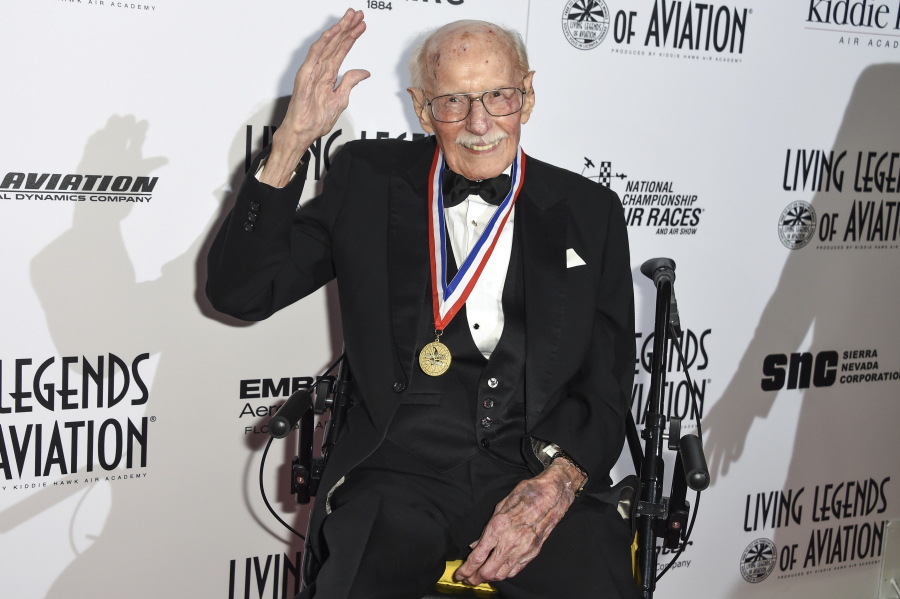LOS ANGELES — Robert A. “Bob” Hoover, a World War II fighter pilot who became an aviation legend for his flying skills in testing aircraft and demonstrating their capabilities in air shows, has died at age 94.
Hoover, who lived in Palos Verdes Estates, Calif., died early Tuesday, said Bill Fanning, a close family friend for many years and fellow pilot.
“He was every pilot’s icon,” Fanning said, recalling his friend as one of the premier test pilots of the 1950s and ’60s. “Bob tested everything. He flew them all.”
When the National Air and Space Museum conferred its highest honor on Hoover in 2007, the museum noted that Jimmy Doolittle, leader of the famed 1942 bomber raid on Japan, had once described Hoover as “the greatest stick-and-rudder man that ever lived.”
“We lost an aviation pioneer today,” Apollo 11 astronaut Buzz Aldrin said in a Twitter post. “He could do magical things with an airplane. He was the best.”
Hoover, who began flying in 1937 at Berry Field in Nashville, Tenn., almost came to an early end. While serving in the Army’s 52nd Fighter Group in Sicily during World War II, he flew more than 50 missions before being shot down. He survived and spent months in a prisoner-of-war camp before he escaped, stole a German fighter plane and flew to safety in The Netherlands.
Early U.S. jet-powered warplanes such as the P-80 and F-84 were tested by Hoover, who then became a backup pilot in the Bell X-1 program and flew the chase plane when Chuck Yeager became the first to break the sound barrier in 1947.
Hoover also tested the XFJ-2 Fury, which was developed for the Navy and Marine Corps, and the F-86 Sabre, an Air Force fighter, among more than 300 types of aircraft he flew in his career, according to the National Air and Space Museum.
He later brought his flying prowess to the public in aerobatic performances using such aircraft as North American Aviation’s P-51 Mustang.
His Shrike Commander 500S, now ensconced in the Air and Space Museum, changed from an ordinary business-style propeller plane into an aerobatic star with Hoover at the controls during an energy management routine. With both engines off he would do a loop, roll, 180-degree turn and land.
Hoover was among the 100 heroes of aviation honored in 2003 at the First Flight Centennial celebration.
“It’s fair to say that anyone who ever had the privilege of flying with Bob, saw him perform at an airshow, or who heard him speak, was affected tremendously by the experience,” said Andrew Broom, executive director of the Citation Jets Pilots Association.
The association provides scholarships in Hoover’s name to students attending Embry-Riddle Aeronautical University.



